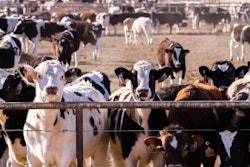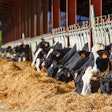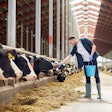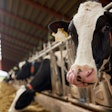
Frank Mitloehner says pork industry can look to California dairy’s progress in shaping its sustainability initiatives.
The dairy industry in California has made big progress in reducing greenhouse gas emissions, setting an example that the pork industry and other animal agriculture sectors could follow.
Frank Mitloehner, professor and air quality extension specialist for the Department of Animal Sciences at the University of California, Davis (UC Davis), told of those efforts while speaking during a February 17 webinar in which the National Pork Board (NPB) revealed its sustainability goals and metrics.
Mitloehner commended the pork industry for its sustainability initiatives, while also suggesting more could be done. In his state of California, the dairy industry has done much to reduce its greenhouse gas emissions.
California does not have a strong pork industry, but it does have a strong dairy industry, he said, and that dairy industry has recently done much to reduce its environmental footprint as the state has placed a lot of emphasis on reducing methane emissions.
“Many of our dairies covered their lagoons. These lagoon covers are now trapping biogas and then this biogas is not burned to make power like it was in the past, but instead they are taking this biogas and they are converting it into a fuel type called renewable natural gas (RNG),” Mitloehner said.
This RNG is serving as a replacement for diesel fuel, being used in vehicles like semi trucks, he said.
Mitloehner said this effort, which is incentivized by the state of California, has already had a substantial impact.
“This technology implementation on dozens of dairies in California has already reduced greenhouse gases by 2 million metric tons so far, and if you wonder if that is a lot or not, it equates to a total of 30% reduction of greenhouse gases from California’s dairy industry,” Mithloehner said. “That is one example of the dairy industry that could easily be adopted by other industries, such as the pork industry.”
















